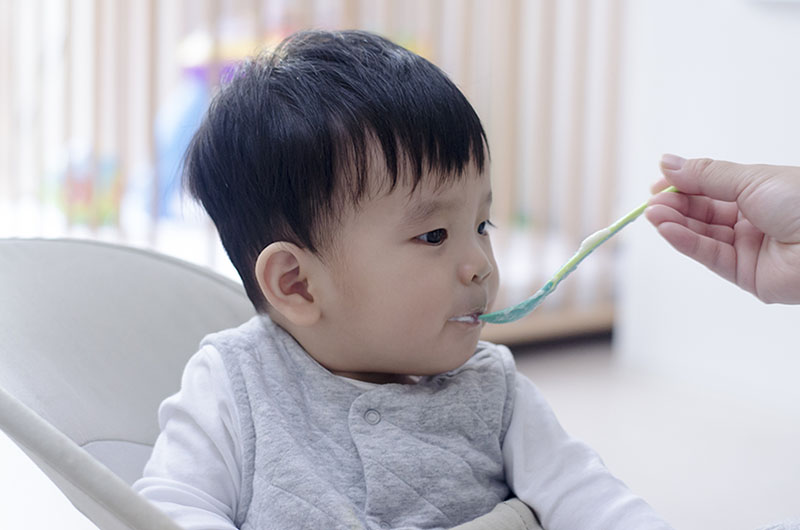Families For Life | Feeding Progression

As your child grows, he should start taking foods with increased texture and complexity. This helps in developing oral motor function and sensory processing, which are essential skills for eating.
Birth to 12 months
- Milk Diet - Breast milk/Formula milk
5 to 6 months
Puree diet/Cup drinking
You can start to introduce your child to solids when he is about 5 to 6 months corrected age. Typical first solids include runny smooth puree textures like:
- Thin smooth white/brown rice baby cereal
6 to 7 months
Thick smooth puree
As your child gets better with his spoon-feeding skills on runny puree textures, you can start to thicken the puree by adding less water to it. Examples of thick smooth puree texture include:
- Thick white/brown rice baby cereal
- Thick smooth pureed apples, pears, bananas, papayas, pumpkins, spinach, potatoes
- Thick smooth yogurt
- Thick smooth custard
7 to 8 months
Thick lumpy puree
Once your child is coping with smooth puree, the next goal is to increase the texture of the puree. Your child’s puree can now contain little lumps. Examples of thick lumpy puree textures include:
- Thick lumpy porridge with lumps of mashed meat and vegetables
- Lumpy mashed apples, pears, bananas, papayas, mangoes, avocados, kiwis, pumpkins, spinach, potatoes, carrots, broccoli
- Lumpy mashed fish, chicken, pork
Cup drinking
At this stage, you can also start to introduce your child to cup drinking for fluids. You can start out with just sips of water or milk and make it fun. It is expected that the fluid will spill and it will be messy initially. However, practicing it repeatedly will allow your child to perfect his cup drinking skills. You can:
- Use an open cup or a cut-out cup (not a sippy or spouted cup)
- Offer small and single sips with jaw support
8 to 10 months
Soft diet/Straw drinking – meltable solids
We want to encourage your child to practise chewing harder textured food at this age too. You can start off by giving your child some hard meltable solids (solids which soften with saliva) to chew on, while making sure that they are not choking hazards. Some examples include:
- Baby bites
- Star puffs
- Round milk biscuits
- Yoghurt melts
Straw drinking
Besides the cup, you can also offer your child a straw for fluids at this age. This will equip your child with another useful skill for drinking. You can:
- Start off with a short and thin straw
- Offer small and single sips
Soft textured foods
As your child’s chewing skills improve, he should be able to handle soft food cut into small pieces during meal times. You can start to include soft textured foods in his diet from all food groups, such as:
- Soft apples, pears, bananas, papayas, mangoes, avocados, kiwis, pumpkins, spinach, potatoes, carrots, broccoli, cheese
- Soft fish chicken, pork, nuggets
- Soft bread
- Softly cooked pasta/rice/noodles/macaroni
- Well-cooked scrambled eggs
You can continue to offer the cup or straw for drinking.
11 to 12 months
Soft textured → Regular adult diet
As your child continues to practise chewing soft textured foods, you can now slowly start to introduce more regular adult food in his diet. Soon, your child will be able to eat foods that you are eating.
Contributed by:
Speech Language Therapy Service, KK Women’s and Children’s Hospital